
POWER AMPLIFIER
As I progressed from used Advents to used Spicas and began to experiment with speaker cables, more and more names of high-end brands entered my consciousness. Burmester (founded in 1977), and some of the other higher-priced components from overseas whose looks seemed commensurate with their prices, held an outsized fascination for me. What about them, other than their visual appearance, accounted for their vaunted reputations and cost?
Somewhere in my 50s, I learned the difference in sound quality between Adcom and early Krell the hard way. It didn't take golden ears to detect the difference; I rued empty pockets each time I heard the Adcom's highs. But, without listening experience, the unique qualities of Burmester and other non-US brands continued to elude me.
Jump ahead to 2022, when the Burmester Musiccenter 151 MK2 streaming D/A preamplifier ($27,500) arrived here for review.' As much as I appreciated its qualities, I always suspected that this "little brother" to the since-replaced Reference Line 111 Musiccenter supplied only a taste of the sound Burmester's engineers could deliver in their top Reference and Signature lines. When Jim Austin reviewed the Top Line 216 amplifier as monoblocks in 2023, in very positive terms,² I became even more intrigued.
Enter the Reference Line Burmester 218 ($50,000 each), a stereo amplifier that weighs almost 93lb and is bridgeable to work as a monoblock. In mono configuration ($100,000 for a stereo pair), the 218 outputs up to 565W into 8 ohms or 785W into 4 (rated, apparently, at 1% THD+N). In the Burmester line, the 218 is bested in power (and presumably quality) only by the far larger, far heavier Signature Line Burmester 159, a 373lb behemoth that is specified to output a mammoth 1200W into 4 ohms.
This story is from the October 2024 edition of Stereophile.
Start your 7-day Magzter GOLD free trial to access thousands of curated premium stories, and 9,000+ magazines and newspapers.
Already a subscriber ? Sign In
This story is from the October 2024 edition of Stereophile.
Start your 7-day Magzter GOLD free trial to access thousands of curated premium stories, and 9,000+ magazines and newspapers.
Already a subscriber? Sign In
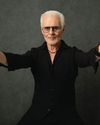
Michael Des Barres and the Art of Aural Obsession
Listening to music inspires us to take action. Upon hearing an I.E.-Instant Earworm-we must then determine the best way we can go about listening to it again (and again) at our convenience.

PLANET OF SOUND
BLACK FRANCIS ON HARNESSING THAT MAGIC PIXIES DUST
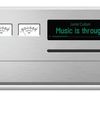
T+A R 2500 R STREAMING RECEIVER PHONO MODULE
In my review of the T+A R 2500 R receiver (August 2024 issue), I covered many of its features and took as deep a dive as time and column inches allowed.
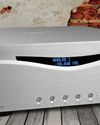
Audia Flight FLS10
The dogma of separates has long reigned supreme among audiophiles: If you're serious about sound quality, you're supposed to need a dedicated preamp and power amp.

Totem Acoustic Element Fire V2
Totem Acoustic was founded in 1987, in Montreal, Canada, by a former high school math teacher named Vince Bruzzese. The company's first product, the Model 1 loudspeaker,' impressed me so much I bought a pair.
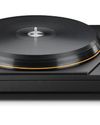
MoFi Electronics MasterDeck
Get two mouthy jazz drummers in a room and watch the sparks fly. Talented turntable designer Allen Perkins, the brain behind Spiral Groove,2 Immedia's RPM turntables,³ and various SOTA models, is first and foremost a jazz drummer.
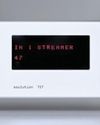
Soulution 727
AImost 14 years have passed since a review of a Soulution product appeared in the pages of Stereophile.\"
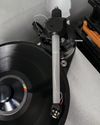
The Spin Doctor checks out the Kuzma Safir 9, a superarm from Slovenia.
The British audio scene from the late 1970s through the mid-1980s was pretty strange. Audio as a hobby was a big deal, with widespread appeal to a much younger crowd than today. Audiophiles were guided by a flurry of what my friends called \"hi-fi pornos,\" audio magazines that filled the racks at the newsagents.

Alex goes to Japan
Arriving in Japan from the United States is like being turned upside down. This condition lasts for much of the first week. When I visited in November, the time difference between Tokyo and New York was 14 hours. \"The floating world\" is a term for the pleasure-addled urban culture of Edo-period Japan, but it's also an apt description for the twilit and not-entirely-unpleasant weirdness of first arriving in Tokyo. Everything seems slightly unreal.
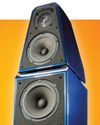
Wilson Audio Specialties The WATT/Puppy
Since the original WATT/Puppy concept kicked off in the late 1980s,' there has been a 40-year evolution leading to the latest version reviewed here.